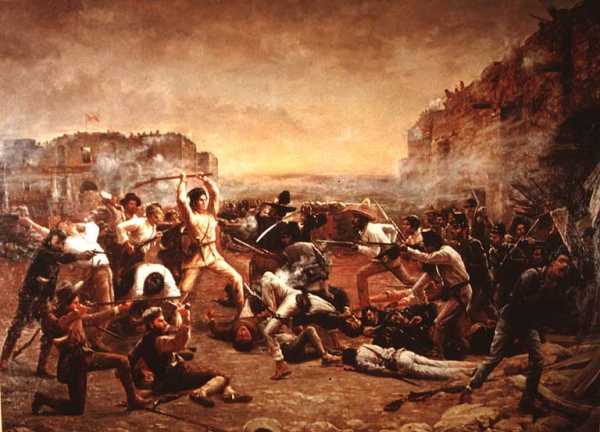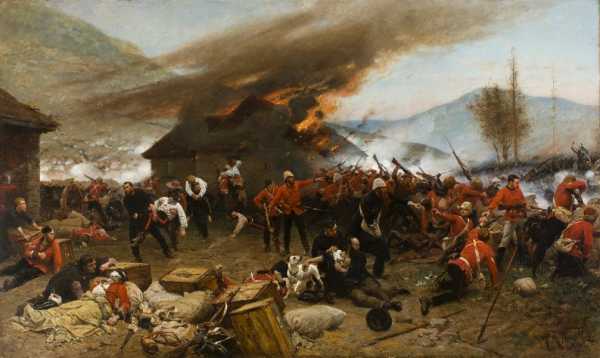In 1836 a mix of Texians (local Mexicans and immigrant Americans) and some other Americans looking for a cause or adventure found themselves surrounded by the Mexican Army. They had a few captured Mexican cannon, a fortified position of sorts in an old mission called the Alamo, their personal arms, and not much else.
The whole Texian Revolution in Mexico was a little confused. Texas was a remote province of Mexico, separated from the mother country by desert and hostile Indians. While the territory was filling up with American immigrants, Mexico was tightening their grip. The Texians revolted and formed an army of sorts, but organization and supplies were equally non-existant. There were at least 3 people claiming to be the Texian Army's leader, and even at the Alamo, there were at least 2 fighting over leadership.
The Mexican force numbered in the thousands against 200 or so Texians. The Mexican artillery pounded the fort for 10 days. By the morning of the final assault, the defenders knew too well they weren't going to survive the battle. Santa Anna cleverly quit bombarding the fort the night before the final push, as the Texians hadn't had any sleep in days, and finally succumbed to nature. By the time the alarm was raised, the Mexican force was already at the gates. The Alamo's defenders put up one hell of a fight, loading their cannon with any scrap they could find as a kind of home made canister rounds. They were all killed, but also took a third of the attacking force with them.
Santa Anna declared a great victory, but his officers were less happy with their own losses. If the Texians died for a cause, they didn't die in vain. Texas got it's independence from Mexico largely from anger over the slaughter at the Alamo. Soon the United States went to war against Mexico and unltimately annexed Texas.

Forty years later, a small garrison of British regulars were about to be surrounded by 3 to 4 thousand Zulu warriors in another mission on the other side of the world. They had received news of the defeat of the British Army at Isandlawana, and decided their only chance was to fight it out at the mission. The mission was a trading post and hospital, and moving the wounded in open country was sure death against the more mobile and numerous Zulu.
The British had about 500 men to defend the mission, which they deemed a fair chance, but when the Zulu's approached, the Native contingents deserted along with their British officers, leaving the garrison manned by 150 men. Soon the Zulus were upon them and the fight commenced almost immediately. The British fire started to tell at once. Some Zulus had firearms, but they were generally in bad shape, and the warriors looked on them as cowardly weapons, prefering to fight hand to hand. Lead accounted for only five of the British dead.
The Zulus slowly started to penetrate the barriers and the hospital building where fighting got grim and personal. As the warriors would break into a room, the soldiers would hack a hole in the wall and drag the wounded into the next room. The fighting raged all day and into the middle of the night. By dawn, the Zulus had vanished, and the defenders counted only seventeen dead. The warriors left behind 350 corpses.
In the end, 2 things determined the fate of the defenders. Their grit and determination, and their weapons and ammunition. All the combatants had copious amounts of the first, but the Brits had a technological advatage over the Zulus that the Americans didn't have. They had the breech loading Martini Henry rifle, and even better, enough ammunition to carry the day. The Zulus were little better armed than stone age warriors, and for that were formidable, and they even wiped out a British column the day before. The British also had a bit of luck, as the trading post had a large supply of ammunition, and they expended over 20,000 rounds that day and were down to their last thousand rounds. Another day of fighting would have been their end.
